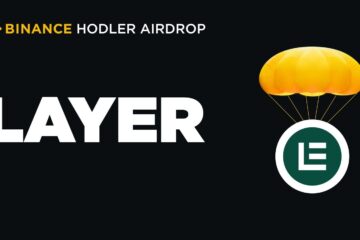Multiplayer battle arena game Moonray, which combines immersive gameplay and intense combat experiences with powerful web3 elements such as asset ownership and peer-to-peer trading, is creating a playbook for the broad adoption of blockchain gaming. Moonray’s creators seek to draw gamers in with exciting gameplay—and then introduce cutting-edge blockchain-enabled features to provide an enhanced game experience not possible in traditional games.
Gameplay and crypto features are not ‘mutually exclusive’
Many blockchain games have struggled to gain traction due to high-barrier user experiences such as downloading web3 wallets, taking custody of digital assets, or lagging times that hamper gameplay. Popular games like Axie Infinity and The Sandbox experienced mass user exodus due to the slow loading times and high transaction fees caused by their underlying blockchain architecture. Moreover, an over-focus on blockchain aspects like DeFi and yield farming limits games’ appeal to a core user base.
According to Hans Andersson, Chief Business Officer (CBO) and co-founder of Moonray Studios, to attract the broader 3+ billion gamers to web3 gaming, creators must give them what they want most: attractive gameplay. “To reach broad adoption, you need to compete for those users with a product they want,” he says. However, exciting gameplay and crypto features “are not mutually exclusive.” It’s about elevating the game experience by implementing features not possible to build without blockchain tech and raising the bar for all game publishers on how to serve their customers.
Blockchain elements can dramatically enhance the game experience.“We are at the very forefront of the huge technological upgrade online gaming is about to experience,” Andersson enthuses. “We are building certain features only possible by integrating blockchain into the game… it is not far-fetched to think these types of features, and the business models built around them will be normalized in online games.”
A ‘softly, softly’ approach to converting traditional gamers
Moonray opted to garner a large user base with its foremost feature—gameplay—launching on Epic Games and expanding to PlayStation 5. This approach enables the game to hook traditional players while adhering to the current web3 policies of industry giants like Sony. “Gameplay is the most important factor for the success of a game and naturally that is what we want to get right and showcase first,” Andersson explains.
“A core part of our approach is to work closely with the major distribution platforms within their existing restrictions so that we are well aligned once they integrate blockchain.” Along with the traditional launch of Moonray, the team has been developing its blockchain infrastructure. “We are rolling out the first blockchain features soon,” he says.
Last month, Moonray announced its integration with Coinbase’s Ethereum Layer 2 scaling network, Base, to introduce key blockchain-enabled features to the game, such as a fully tradable NFT collection of playable character skins, giving players true ownership within the Moonray universe. “Ownership of digital assets and peer-to-peer trading, as well as infrastructure for competitive gaming are two things we will showcase soon.”
By following a pragmatic approach that observes all stakeholders’ needs and pain points, Moonray is creating a path for the successful adoption of blockchain games, focusing on gameplay without ignoring the powerful advantages that web3 gaming provides. “The blockchain gaming space is waiting for breakout titles that can serve as an example of how to do it “right.” We’d love to think that we are one of those games, but we have a lot of building left to do.”
 Bitcoin
Bitcoin  Ethereum
Ethereum  Tether
Tether  XRP
XRP  Solana
Solana  USDC
USDC  TRON
TRON  Lido Staked Ether
Lido Staked Ether  Dogecoin
Dogecoin  Figure Heloc
Figure Heloc  Cardano
Cardano  Bitcoin Cash
Bitcoin Cash  Wrapped stETH
Wrapped stETH  WhiteBIT Coin
WhiteBIT Coin  Wrapped Bitcoin
Wrapped Bitcoin  Wrapped eETH
Wrapped eETH  USDS
USDS  Chainlink
Chainlink  Binance Bridged USDT (BNB Smart Chain)
Binance Bridged USDT (BNB Smart Chain)  Monero
Monero  LEO Token
LEO Token  WETH
WETH  Stellar
Stellar  Coinbase Wrapped BTC
Coinbase Wrapped BTC  Sui
Sui  Ethena USDe
Ethena USDe  Litecoin
Litecoin  Zcash
Zcash  Avalanche
Avalanche  Hyperliquid
Hyperliquid  Shiba Inu
Shiba Inu  Hedera
Hedera  Canton
Canton  USDT0
USDT0  World Liberty Financial
World Liberty Financial  sUSDS
sUSDS  Dai
Dai  Toncoin
Toncoin  Cronos
Cronos  Ethena Staked USDe
Ethena Staked USDe  PayPal USD
PayPal USD  Polkadot
Polkadot  Uniswap
Uniswap  USD1
USD1  Mantle
Mantle  Rain
Rain  MemeCore
MemeCore  Bittensor
Bittensor 


